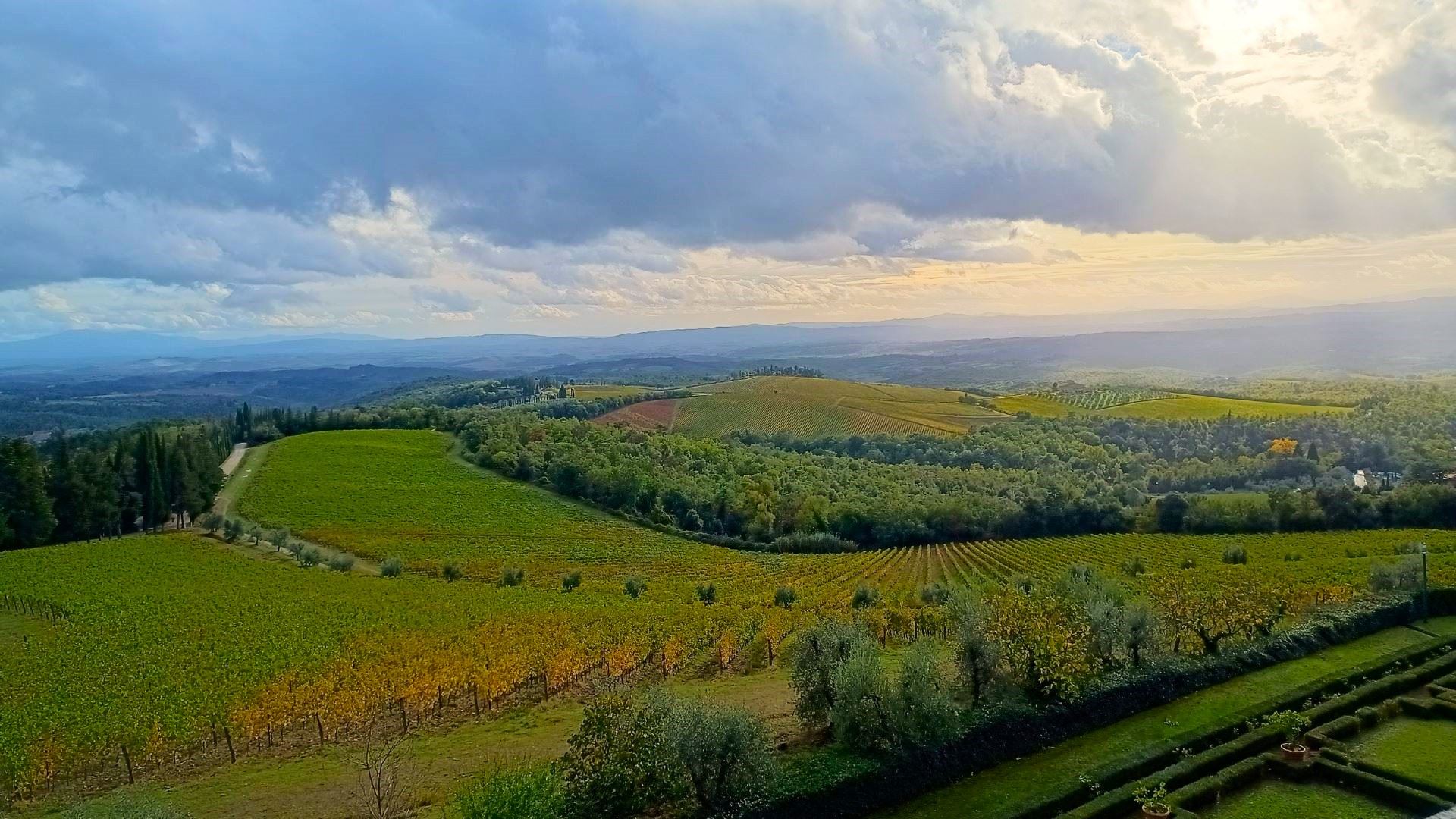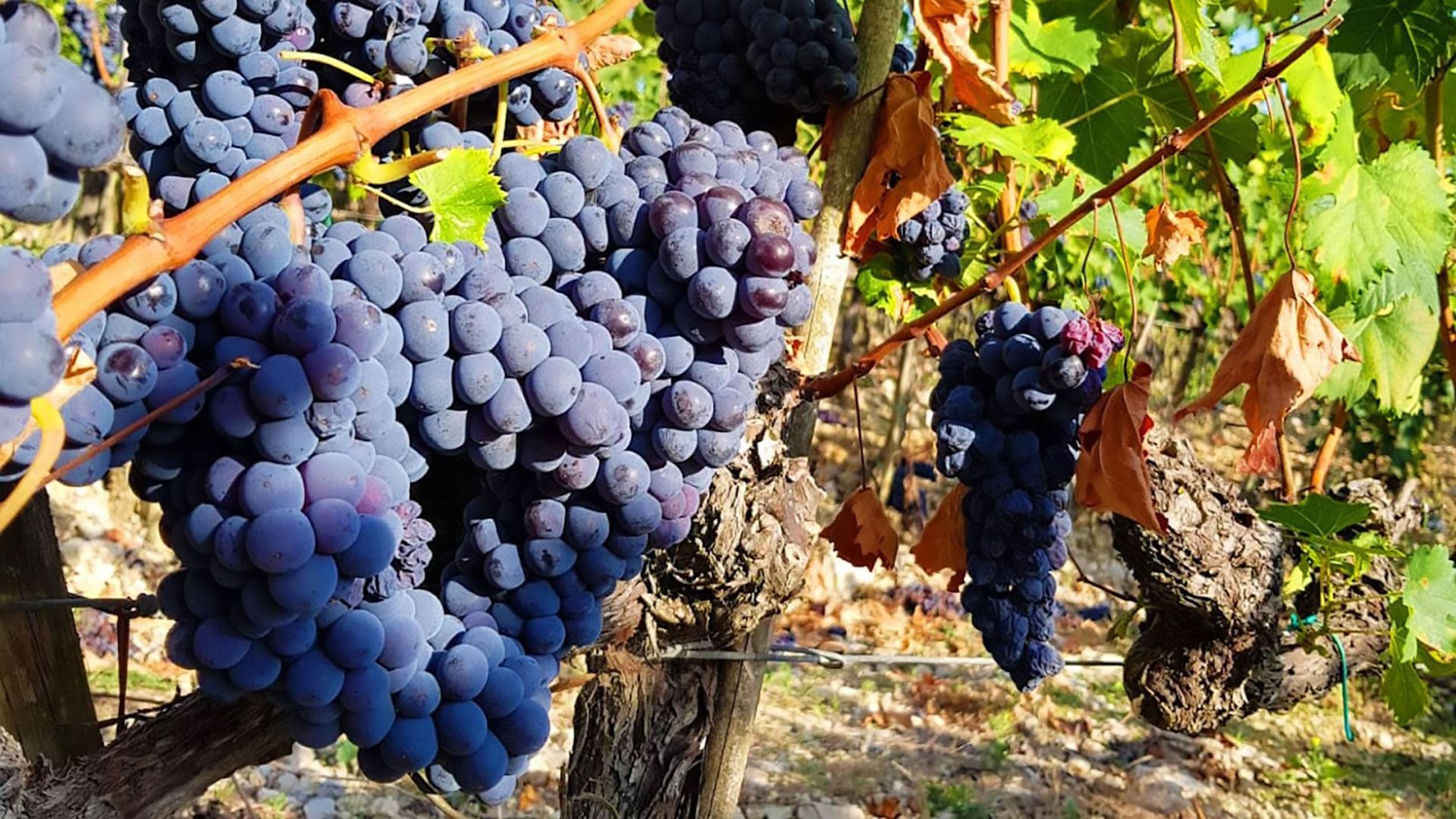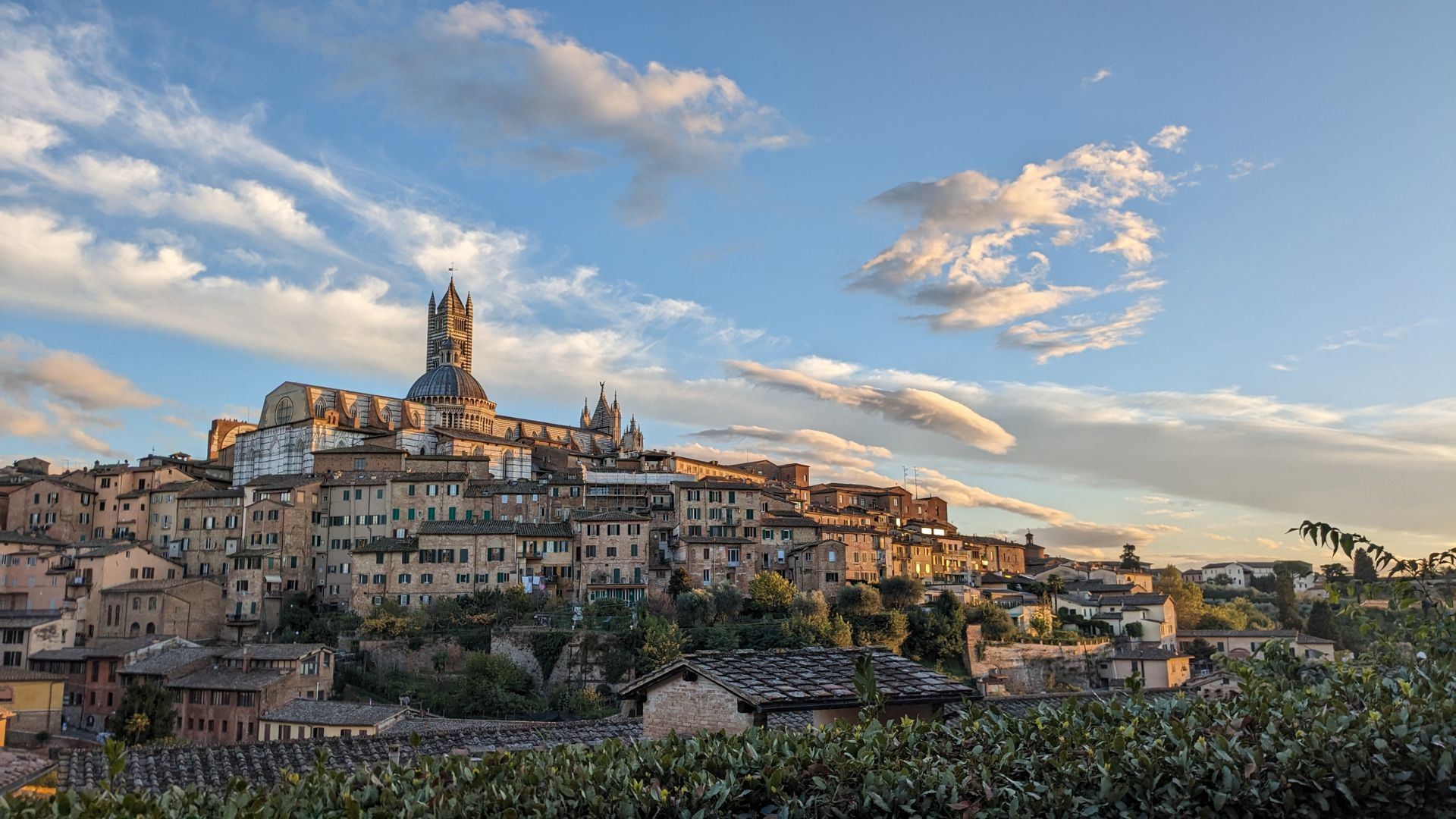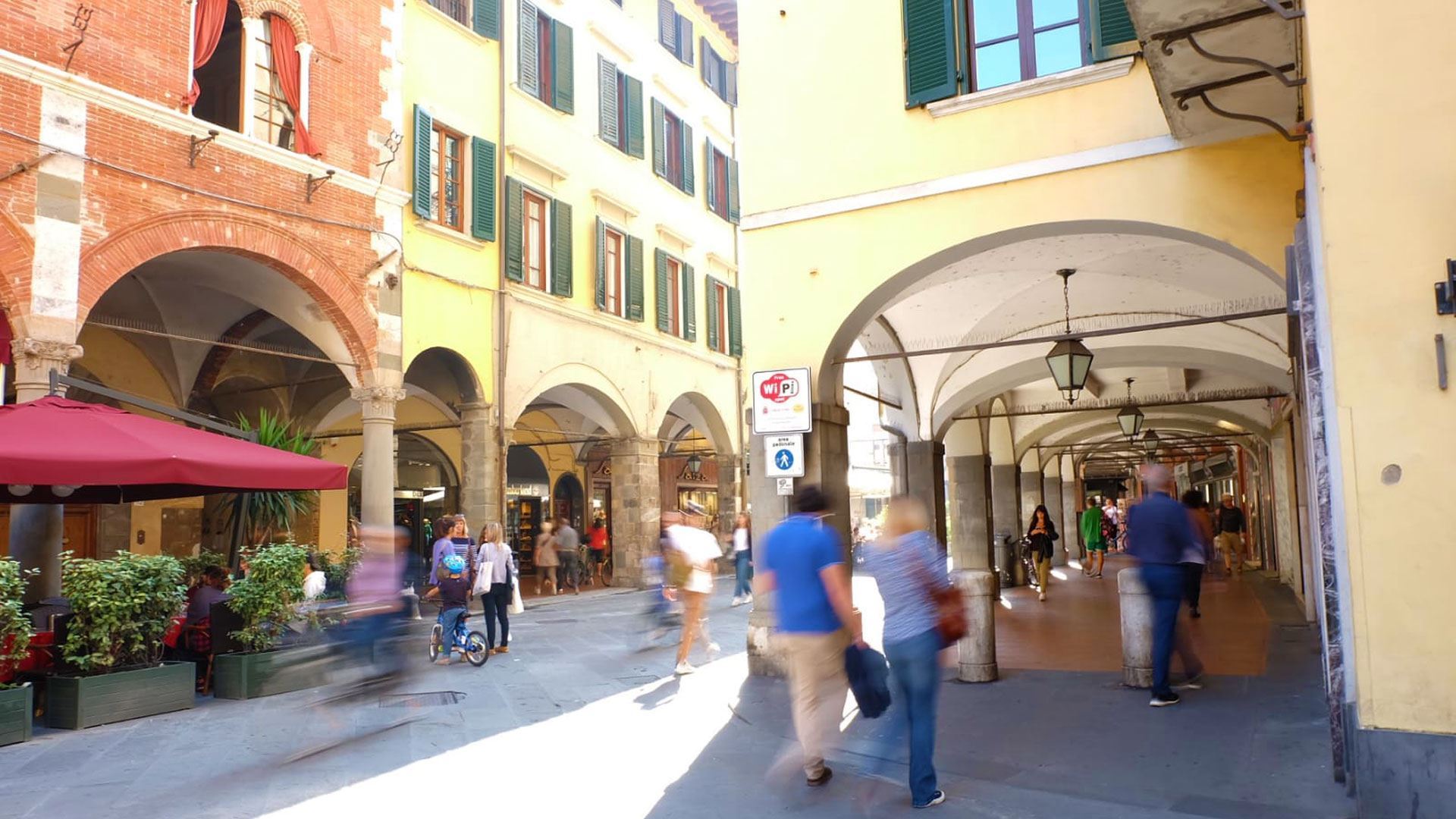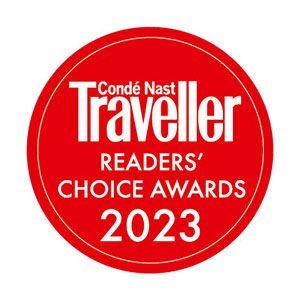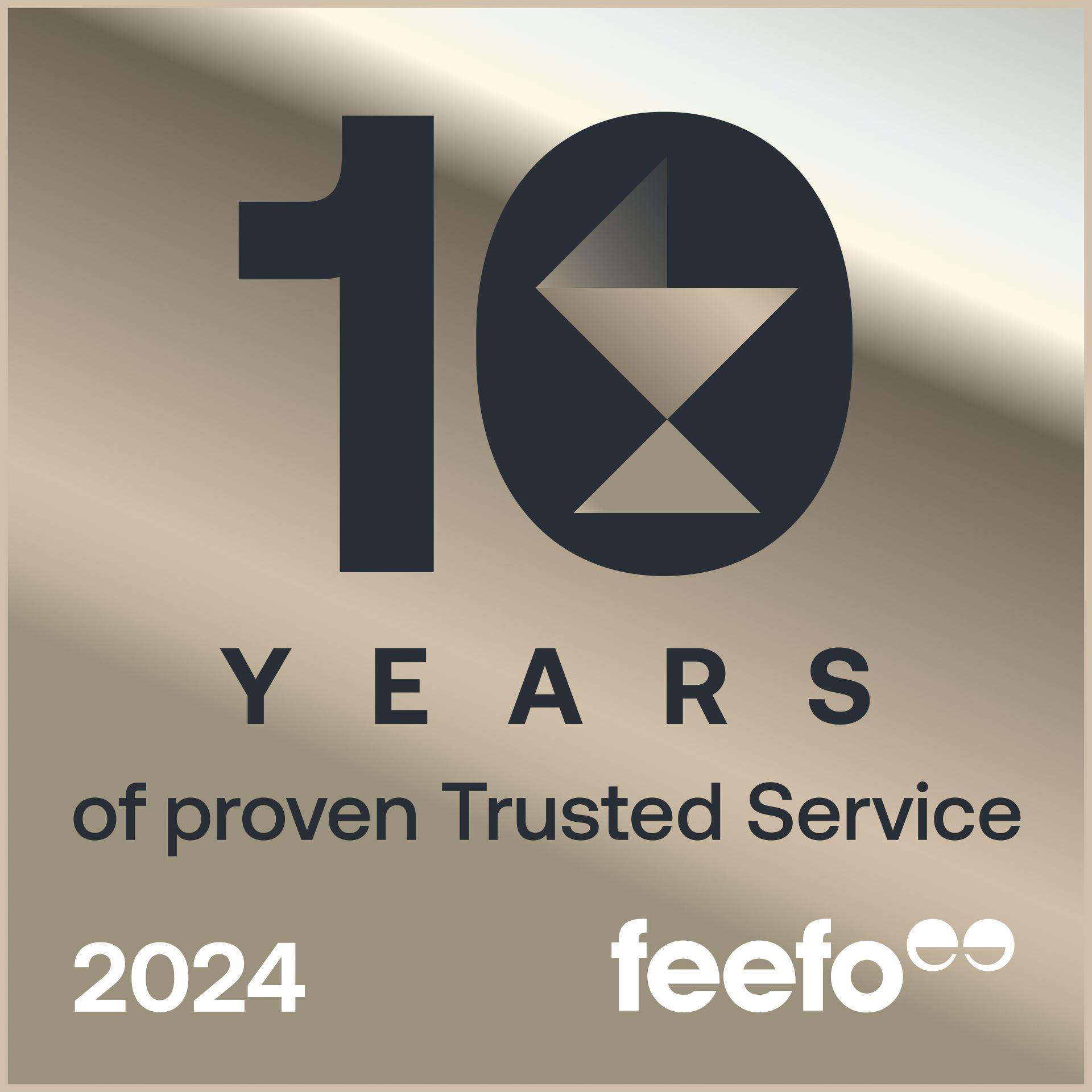If the Tuscan lifestyle is the greatest lure, then Chianti is perfection. This famous wine-growing region is quintessential Tuscany, with villa-living the ideal way of appreciating the countryside. In the Chianti, the locals seem to have found the right balance between country and city living. The Chianti countryside is a patchwork of vineyards, olive groves and cypresses, or cornfields edged with sunflowers. Stretching from Florence to Siena, this soothing scenery, dotted with hill-towns, villas and castles, inspired the Renaissance masters. The art magnets of Florence and Siena are nearby yet feel far away. For those not fascinated by frescoed churches, the delights of Florence and Siena can often fade. The desire to escape the city’s cauldron-like atmosphere in summer can also prove overwhelming. If so, the Chianti is for you, with all its countrified temptations. Take it slowly, from meandering between wine estates to homely inns, castle-visiting and cycle trails.
The Chianti
-
-

Top Ten Things to Do
The Chianti is a place for pottering and chance encounters. It is delightful, whether explored by car, by bicycle or on foot, or ideally a mixture of all three. The Chianti makes a great base, from cultural day trips to Siena and Florence to wine-tasting and foodie forays, along with cycling trips.
-
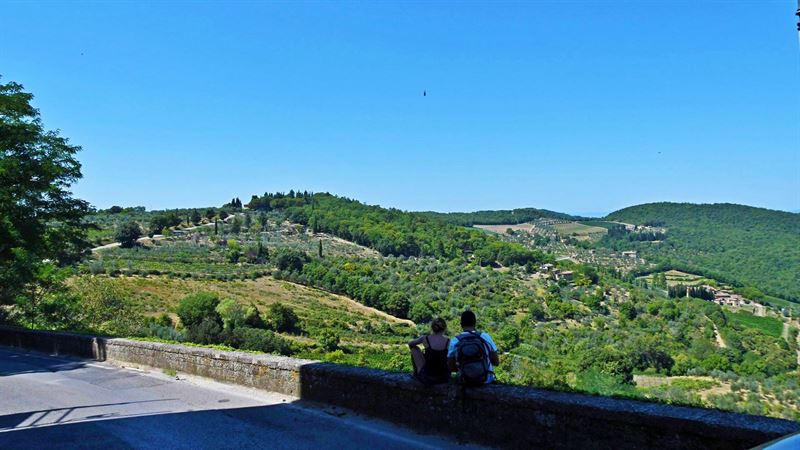
1. Pottering in perfect countryside
It’s a travesty to equate Tuscany with `Chiantishire’, a parody of an English country-house party transposed to Italy. It is also misleading to reduce the region to Renaissance art, Florentine architecture and the Chianti vineyards. The Tuscan landscape is as beautiful as the art. This soothing scenery, dotted with hill-towns, inspired the Renaissance masters.
The SS222, known as the Chiantigiana, or Chianti Way, winds its picturesque way from Florence to Siena, through the heart of the region, offering archetypal scenes of cypress trees, olive groves and vineyards. You could begin in Greve in Chianti or Panzano in Chianti, preferably during a weekend market. But even without an agenda, the Chianti makes perfect sense, stopping wherever takes your fancy.
Fortunately, this is the best-organised wine region in Italy, not just in Tuscany. Chianti wines have been commercialised for over three hundred years so this is a sophisticated and visitor-friendly wine region. Arguably, the wine-touring experience is the smoothest available in Italy. Even if booking is generally preferred, the estates are adept at welcoming visitors and ensuring that you come away with a true sense of place and even a rekindled passion for Tuscan wine. It’s rarely about a quick slurp and moving on. In a place where nothing is essential viewing, everywhere is a glorious detour.
www.visittuscany.com
https://www.visittuscany.com/en/areas/chianti/
-

2. Drinking in the Chianti wine trail
The Chianti Classico wine trail explores some of the most legendary wine estates, an experience combining countryside, castles, cuisine – and wine. Not that we forget the charming individual estates that characterise the Chianti. In Tuscany, wine trails are always about far more than wine. Never think that just because you’ve visited a couple of estates that you’ve “done” wine-tasting. The estates, and their owners, are so diverse and each provides a new window on Tuscany.
The Chianti covers an enormous region, spanning seven different wine “zones”. At its heart, in the hills between Florence and Siena, is Chianti Classico The main centres are Greve, Panzano, Castellina, Gaiole, Radda and Fonterutoli, whose estates are covered in our individual guides. Easily accessible off the picturesque route SS222, the grandest, castle-like estates have often been run by the same families since medieval times. This is the case with the aristocratic Antinori, Frescobaldi, Mazzei and Ricasoli dynasties, all wine estates we recommend in our individual guides. Their vaulted castles, frescoed villas, rolling vineyards and gastronomic restaurants encourage you to linger. The remaining Chianti wine zones include the Colli Fiorentini, Colli Senesi, Colline Pisane, Colli Aretini, Rufina and Montalbano. These are, rather confusingly, spread out over central Tuscany.
The most compelling Chianti wine estates have tasting rooms and an enoteca (wine shop) where you can buy the wines. Most are geared up to international shipments. Bigger estates often have renowned restaurants and may even run cookery courses that can last as little as a morning. A few estates have created wine museums or international-style sculpture parks. For a memorable experience, book a tasting (degustazione) combined with a tour of the vineyards and cellars. Sip, savour and enjoy.
Address: Consorzio Vino Chianti Classico (Chianti Classico Wine Consortium)
Tel: +39 055 82285
Web: www.chianticlassico.com -
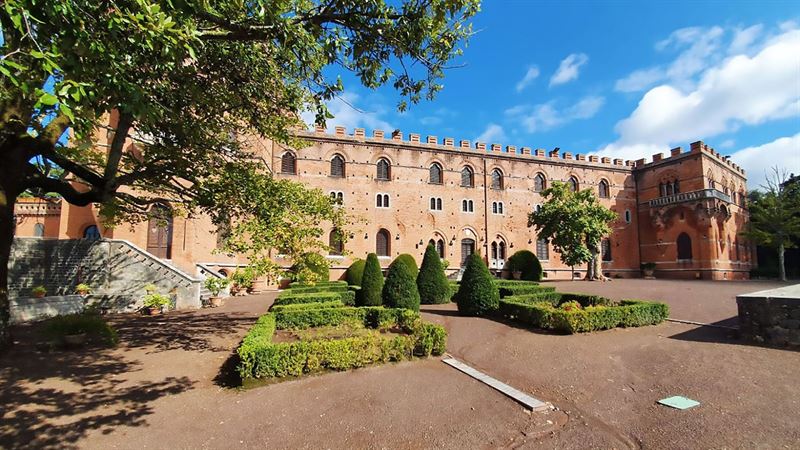
3. Castello di Brolio - the birthplace of modern Chianti Classico
South of Gaiole in Chianti stands Castello di Brolio, the birthplace of the modern Chianti industry. It was in this castle in 1872 that Barone Bettino Ricasoli established the formula for making Chianti wines that has been used ever since. It requires a precise blend of white and red grape juice and the addition of dried grapes to the vat to give the wine its softness and fruit-filled flavour.
Brolio has long been controlled by the Ricasoli, Chianti landowners since the eighth century. The castle itself dates from the 11th century and is one of the oldest in Italy, even if its Gothic Revival style was introduced by Barone Bettino Ricasoli. From the year 1200 onwards, the Ricasoli dynasty fought on the Florentine side against Siena, their greatest rivals. As a Florentine outpost, Castello di Brolio’s past spans Guelf-Ghibelline conflicts, sacking by the Sienese in 1529 and German occupation and Allied bomb¬ing during World War II. The medieval walls are the castle’s most strik¬ing feature, along with the 14th-century chapel, set in lush grounds. Drink in the views of vineyards and the valleys from the castle ramparts.
At Brolio, you are tasting history in all senses. Baron Bettino Ricasoli, Italian premier in 1861, relaunched the family wine business, a business continued by the present family. Baron Ricasoli’s skill was to capitalise on improvements in production and spearhead the modernisation of wine-making, with the establishment of the Chianti Classico brand. Since then, a consortium, the Consorzio Chianti Classico, controls production, with the gallo nero (black cockerel) emblem guaranteeing quality. Book a visit to the castle cellars, tour the estate, taste the wines, and see the family museum. The sunset tour is the most private and includes dinner in the Ricasoli’s restaurant, L’Osteria del Castello. Your castle ticket also allows for a free wine-tasting in the Ricasoli tasting rooms below the castle. While there, try Barone Ricasoli Castello di Brolio Chianti Classico 2006.
Address: Castello di Brolio
Localita Madonna a Brolio
Gaiole in Chianti
53013
Tel: +39 0577 7301
Web: www.ricasoli.com -
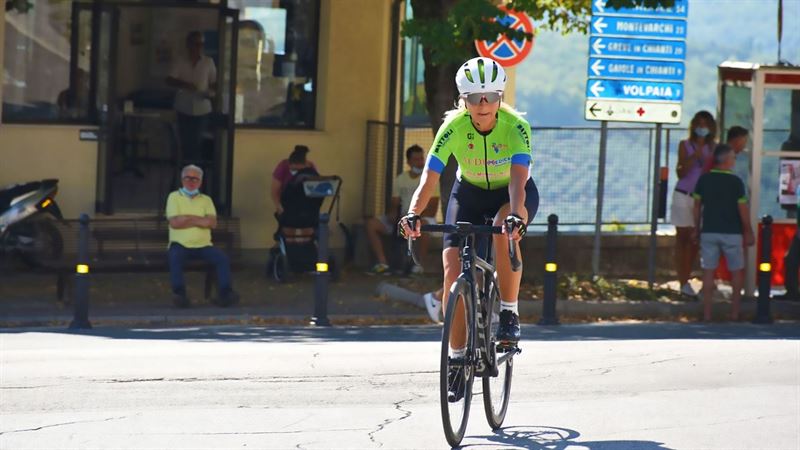
4. Cycling in the Chianti
There is a Disneyfied notion of cycling `Chiantishire’: you cycle aimlessly along and fall from one gorgeous wine estate to the another until, too intoxicated to go further, you fall asleep in a gentle olive grove. Think again: this is far from the real Chianti. The reality is tougher and features far less wine but also no snoozing under olive trees. Why would you not sleep in your lovely villa? The other bad news is that the food at local inns is so good that despite all your exertions, you are unlikely to lose weight. But on the plus side, Chianti cycling is one of the highlights of the region, if you are reasonably fit. It’s about cycling through rolling countryside, olive groves and medieval villages. It’s about enjoying the solitude, though when you meet the locals, they’re usually incredibly friendly.
The Chianti trails may look like a walk in the park compared with cycling in the lofty Dolomites or the Alps - but think again. While the Chianti’s lack of those steep, long climbs can disappoint cyclists, never under-estimate the toughness of the Chianti trails, if toughness is what you want. Not just do the roads twist and roll, but so does the changeable weather. This is especially true when you’re on unpaved roads, the famous rough gravel tracks known as “strade bianche.” This is the real Chianti, when it’s about you facing your fortune, facing every gruelling twist and turn.
The Chianti has produced tough cycling legends such as Gino Bartoli, Mario Cipollini and Fiorenzo Magni. But if you’d rather relax and not become a legend then book a cycling tour through a local operator. For tougher cycling trails, ideally choose to go in spring or early autumn. See more cycling suggestions in our other Chianti guides, accessed through our Destinations listings.
Easy to more challenging day-long tours from Greve, Radda, Panzano and Gaiole.
Discovery Chianti cycling tours:
Tel: (+39) 328 6124658
Web: www. discoverychianti.com
-
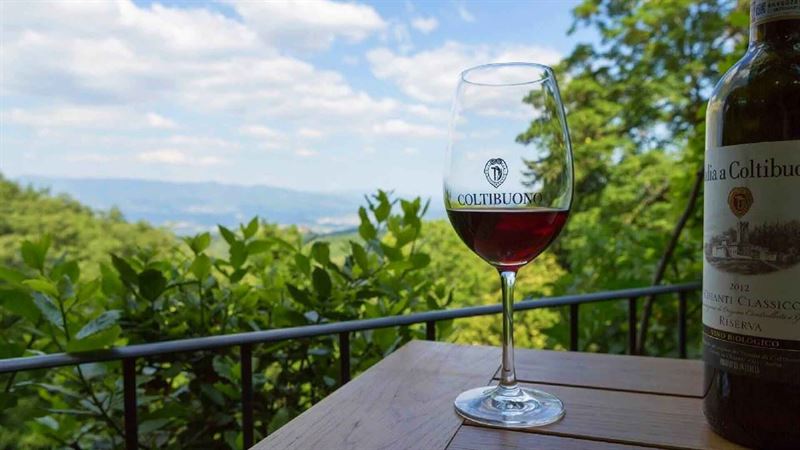
5. Badia a Coltibuono – dreamy abbey wine and oil estate
Set between Gaiole & Radda e, this former Benedictine abbey surveys the estate vineyards. The tranquil oil and wine estate surveys landscape that has been cultivated since time immemorial. In Tuscany it is hard to separate the wine and oil from the scenery. The aptly named Badia a Coltibuono (Abbey of the Good Harvest) is framed by pines, oaks, chestnuts and vines. Founded in 1051, thie medieval abbey belonged to reformist Vallambrosan monks who established viticulture here. Little did they know that their estates would still be flourishing so many centuries later. Since the Dissolution of the Monasteries in 1810, this medieval abbey has belonged to one family. The forward-looking Stucchi Prinetti family started off as Florentine bankers before pioneering the commercialisation of quality Chianti here. The family remains committed to sustainable farming.
The beguiling 15th-century cloisters, chapel and frescoed ceilings can be viewed as a guest of the Tuscan cookery school, while the 12th-century walls and bell-tower are open to all. You can also book a tour of the original monastic cellars and frescoed villa, followed by a wine-tasting. Below the former abbey are cellars filled with Chianti Classico, the abbey’s traditional living. No less famous are the aromatic chestnut honey and olive oil, the delicious Extravergine Badia a Coltibuono. Much of the produce can be bought on the premises or savoured in Ristorante Chianti, the excellent abbey restaurant. You can also do a cookery course run by Benedetta Vitali, founder of the noted Florentine restaurant Cibreo. within the former Romanesque abbey.
Address: Localita Badia a Coltibuono
53013
Gaiole in Chianti
Tel: (+39) 577 746110
Web: www.coltibuono.com -

6. Castello di Ama - for contemporary art and fine wine
This was the wine estate that entranced the Obamas on their post-presidential tour of Tuscany. Just when you think you’ve got the measure of Tuscany, it throws a curve-ball. Castello di Ama is one of the biggest surprises in the Chianti. It’s not even a castle but a wine estate, restaurant and centre of contemporary art. At first sight it’s yet another traditional borgo, a stone-built hamlet nestling in the Chianti hills. At its core is an acclaimed wine estate, home to one of the leading Chianti Classico producers, with serried lines of vineyards as far as the eye can see. This family-owned cantina remains a working wine estate known for its superb, full-bodied reds. You can tour the cellars and try the fabled wines but also visit the villa, hamlet and sculpture gardens, too. It’s a complete experience.
The grounds are home to a world-class collection of contemporary art installations. This ambitious collection, Castello di Ama per l’Arte Contemporanea (Castello di Ama for Contemporary Art) was set up as a legacy project in 1999. Lorenza and Marco Pallanti have created a sculpture garden of site specific installations in keeping with the spirit of the wine estate and medieval borgo beyond.
Castello di Ama repurposes original buildings, such as an on-site church and wine cellar, to showcase art installations in a striking way. The most engaging is the show-stopping mirrored installation by Daniel Buren that reflects the rolling hills.
Book a wine tour and tasting, come for lunch, visit the sculpture park, or simply visit the estate’s Enoteca to sample and buy the wines, olive oil and nature-inspired home fragrances.
T: (+39) 0577 746069 (wine estate) (+39) 0577 746191 (restaurant)
Address: Castello di Ama
Localita Ama
53013
Gaiole in Chianti
Web: www.castellodiama.com -
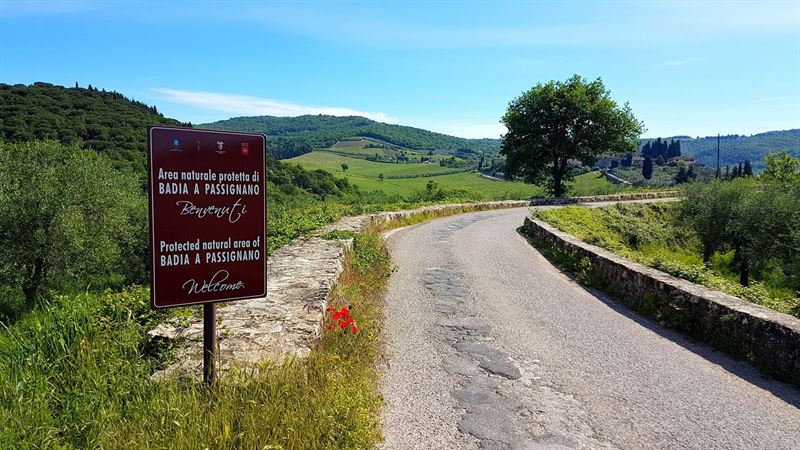
7. Badia di Passignano - abbey and Antinori wine estate
This moody hamlet is centred on a Benedictine monastery founded by the Vallambrosan order in 1049. All around are vineyards belonging to the Antinori Chianti estates. This particular Antinori wine estate is given over to vineyards of Sangiovese grapes and olive groves. This Florentine-based wine dynasty have been peddling the `nectar of the gods’ in Tuscany since 1385. Before succumbing to the wine option, spend a bit of time in the fortified abbey where the great Galileo Galilei taught in the 16th century. Pre-book a guided tour with one of the handful of remaining Vallambrosan monks to admire a refectory decorated with a magnificently restored Last Supper by Domenico Ghirlandaio.
If more earthly concerns are on your mind, then the abbey can also sustain you. The Antinori’s Michelin-starred restaurant occupies part of the vaulted abbey, with the so-called `historical cellars’ located immediately below the abbey. At the estate you can sample Antinori signature wines, whether Chianti Classico wines or Super Tuscans. Famous names are Tignanello, Guado al Tasso, and Solaia, as well as Chianti Classico Riserva Badia a Passignano. Book an Antinori wine-tasting and cellar tour, possibly even an oil-tasting, followed by lunch or dinner in their onsite fine-dining restaurant. L’Osteria di Passignano or their far simpler Trattoria della Fonte in a farmhouse nearby. Instead, L’Antica Scuderia is the best dining option for families or anyone fancying a pizza.
Badia di Passignano (Passignano Abbey): T: (+39) 055 8072341 (English); (+39) 055 8071171 (Italian)
Antinori Passignano estate: T: (+39) 055 8071278
www.antinori.it
Address: Badia di Passignano
Localita Badia a Passignano
50028
Tavernelle Val di Pesa
Tel: (+39) 055 8072341
Web: www.osteriadipassignano.com -
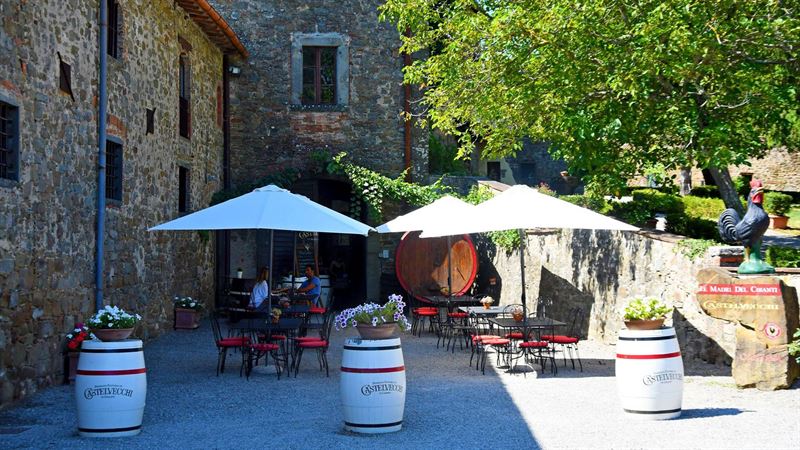
8. Dining in rural inns
The Chianti is a region in which dining is not just a delightful activity but the focus of many an outing. With few exceptions, the inns specialise in traditional Tuscan fare, with different degrees of simplicity or sophistication. Beyond the restaurants that specialise in contemporary versions of Tuscan cuisine, the menus are not dramatically different throughout the Chianti. What they generally share is a charming mood, an attention to quality and a wine list that reflects the finest local estates.
What’s more, many of the most appealing inns are set in Chianti Classico wine estates. The grandest of these estates aim to showcase their wines by matching their favourite vintages to Tuscan menus with a twist. It’s a played-down version of fine dining. Other estates may offer simpler inns and a chance to combine the wine with cucina povera, the healthy but hearty `peasant’ cooking of the past.
At the very least, you can usually expect tasting rooms and an enoteca (wine shop) where you can buy the wines. These princely wines have little in common with the folksy, straw-covered flasks of plonk that once symbolised Tuscany abroad. Always check what’s available online as the options may vary from a gourmet meal to a wine-tasting paired with bruschette or crostini. As with our favourite Chianti wine estates, it’s about drinking it all in. The experience is rarely about a quick slurp and moving on.
Address: Consorzio Vino Chianti Classico (Chianti Classico Wine Consortium)
Tel: (+39) 055 82285
Web: www.chianticlassico.com -
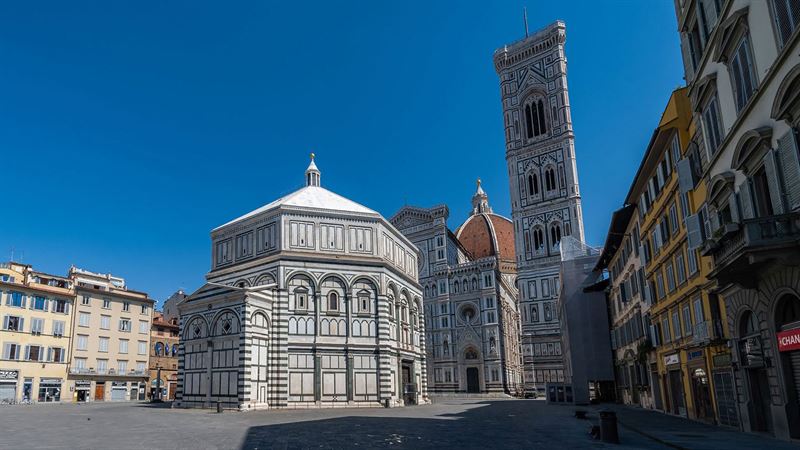
9. Art-filled Florence
Florence lies just north of the Chianti. Despite devouring the checklist of must-see sights, steer clear of suffocating under the weight of treasures. Allow time for aimless wandering. Beyond the selfie sticks and statuary awaits a funky foodie haunt with sleek cafes, superb cooking and seriously edible markets. Florence is not fusty. Nor has the greedy city lost its gutsy Tuscan soul: traditional inns still serve earthy peasant fare, including macho steaks. Beware of trying to do too much on a day trip. Balance visits to galleries with wanderings in search of the perfect trattoria or the perfect view.
Begin in Piazza della Signoria, the city’s grandest square, with its copy of Michelangelo’s David and, beside it, the crenellated Palazzo Vecchio, with a well-presented collection. After a coffee at Rivoire, brace yourself for the Uffizi Gallery, the world’s greatest collection of Italian art. As such, the gallery is both a feast for the senses and an indigestible banquet so try and plan your visit in advance or even book a time slot online. After lunch, visit the Duomo, the biggest building for miles around. It is still Brunelleschi’s Renaissance dome that defines Florence. Out of respect for Brunelleschi’s achievement, the city forbade the construction of any building taller than the Duomo.
Clear your head in the Oltrarno, across the river Arno, where the Giardino Boboli (Boboli Gardens) act as an excellent antidote to the suffocating splendours of the Pitti Palace. The Medici dynasty created these statuary-encrusted gardens, which became the model for Italianate gardens for centuries to come. Before dinner, explore the Oltrarno neighbourhood's craft heritage on the so-called Left Bank of the city. This bohemian district is studded with stylish bars and buzzy inns interspersed with antique shops, jewellery-makers, picture-restorers and bijou art galleries.
Check our Florence guide to see what appeals most. If visiting a number of museums, consider buying a Firenze Card online (www.firenzecard.it) and also book a time slot at the Uffizi Gallery.
-

10. Day trip to Siena
Siena frames the southern end of the Chianti and makes for a magical day trip. Siena is a Gothic city built on a human scale and is effortlessly civilised and at ease with itself. All roads lead to Il Campo, the beguiling, shell-like central square, shaped like an amphitheatre. Sit at a terraced café on the sloping side of the square and spot the division of the paved surface into nine segments, recording the wise Council of Nine who governed Siena from the mid-13th century to the early 14th. Consider climbing the slender Torre del Mangia, with sultry views over a pink piazza and Siena’s rooftops, even if the views from the Cathedral rooftops are even better.
After an early lunch, a leisurely stroll leads to the Duomo, Siena’s pinnacled Gothic cathedral. The facade is a riot of green, pink and white marble, like a glorious iced cake. Siena Cathedral and the Cathedral Museum should be seen as one entity as they share several spaces. The Museum displays Pisano’s original statues for the façade along with Siena’s best-loved work, Duccio’s Maestà, the Virgin Enthroned. For many visitors, equally impressive is the rooftop walk, known as the Panorama from the Unfinished Façade. These are arguably the finest views of Siena. Facing the cathedral is the Spedale di Santa Maria della Scala, the most extraordinary building in Siena. It began as a hospital a thousand years ago and continued as one until it was reborn as a magnificent museum in recent years. In medieval times, it was always far more than a hospital. The art-studded complex embraces a former pilgrims’ hostel, an orphanage, frescoed churches and granaries.
Don’t let Siena’s art-studded museums blind you to the beauty of the backstreets. Here, the city history unfurls like a medieval banner. Walkable Siena has well-preserved walls and inviting gateways. Wind through a tangle of medieval streets and stumble across secret courtyards, fountains and surprisingly rural views. Check our Siena guide to see what appeals most.
Centro Guide (guided walks)
T: (+39) 0577 43273
www.guidesiena.it
Address: Siena tourist office
Spedale di Santa Maria della Scala
Piazza Duomo
Tel: (+39) 0577 280551
Web: www.terresiena.it -

Eating and Drinking
The Chianti is one of the most appealing parts of foodie Tuscany. The Chianti wine route is a chance to enjoy Chianti Classico wines and T-bone steaks in cosy inns. Wine-growing dates back Etruscan times, as evidenced by the goblet found in an Etruscan tomb at Castellina in Chianti, and surviving Etruscan frescoes that depict Bacchus, the Roman god of wine. Medieval monasteries established viticulture here – and some of these original wine estates survive, such as the Badia a Coltibuono and Antinori’s Badia a Passignano, with its fine-dining restaurant, L’Osteria di Passignano.
Naturally, this is the homeland of Chianti Classico, even if Super Tuscans are also produced in the region. In 1716 a decree issued by the Grand Duke of Tuscany defined the boundaries of the Chianti area and established the laws governing the production and sale of wine. Today this region is the world’s oldest wine-producing league. The Chianti Classico area includes the areas of Barberino Val d’Elsa, Castellina, Greve, Gaiole, San Casciano and Tavernelle Val di Pesa.
Cuisine from the Chianti is a hearty variant on classic Tuscan cooking, with borrowings from nearby Florence and Siena as well as local variants. Look out for ribollita, a thick bean soup, or other simple dishes that reflect Tuscany’s cucina povera (peasant cuisine). At the other end of the scale, fine dining is also available, especially in many of the grander castle and abbey estates. Here, dishes tend to be more sophisticated and often involve wine-pairing and tasting menus.
-
La Bottega
Set in an enchanting medieval hamlet just north of Radda, this charming family-run inn serves unfussy but still special Tuscan dishes. These are complemented by some of the best Chianti Classico wines, along with salads and vegetables from the kitchen garden. Mid-priced dishes include hand-rolled pasta, such as pici with duck or wild boar sauce, or ribollita soup followed by wild boar or Florentine T-bone steak. To be sure of grabbing a table on the shady terrace, book ahead and then enjoy view from the hilltop hamlet over the rolling plain below.
Address: Piazza della Torre 1
Volpaia
53017
Radda in Chianti
Tel: (+39) 0577 738001
Web: www.labottegadivolpaia.it -
L’Osteria di Passignano
Combine a visit to the Badia di Passignano abbey with a prestigious but pricey wine-tasting and cellar tour linked to the Antinori wine dynasty. Surrounded by serried vineyards, this fancy Michelin-starred restaurant occupies part of the vaulted medieval abbey. After a tour of the `historical cellars,’ consider lunch in this fine-dining restaurant (booking required). The creative modern Italian cuisine still incorporates fine Tuscan ingredients. Typical dishes include artichoke-stuffed pasta in a Parmesan sauce, pork with black truffle puree, or lamb served with an asparagus-filled pastry. The wines make the perfect accompaniment, perhaps including Antinori’s Riserva, which is oaky and spicy with notes of cinnamon and candied fruit. If won over, on another occasion, dine in a different Antinori establishment, such as their simpler La Trattoria della Fonte nearby, which also runs cookery classes. After preparing a Tuscan meal, students proceed to devour it in L’Osteria di Passignano.
Address: Badia di Passignano
Localita Badia a Passignano
50028
Tavernelle Val di Pesa
Tel: (+39) 055 8071278
Web: www.osteriadipassignano.com & www.antinori.it -
L'Osteria Le Panzanelle
Set on the road between Panzano and Radda, this is a bastion of Tuscan home-cooking. With its white-washed walls, it’s an unpretentious but utterly reliable country trattoria. Come for the mid-priced home cooking, friendly service, short but seasonal menu and the extensive Tuscan wine list. Tuck into the Florentine tripe, roast rabbit, the pumpkin ravioli or any pasta in wild boar sauce. End with the panna cotta or the homemade, crunchy cantuccini biscuits, ideally dipped in Vin Santo.
Address: Localita Lucarelli 29
53017
Radda in Chianti
Tel: (+39)0577 733511
Web: www.lepanzanelle.it -
L’Officina della Bistecca
The clue is in the name: this celebrated Panzano place is a meat-lover’s dream and the temple of Florentine T-bone steak. Although not for the faint-hearted, this Tuscan steakhouse is a memorable experience and is a place beloved by top Italian chefs. Here, the butcher Dario Cecchini is the local legend. Diners sit at a long, communal table and tuck into a meat feast, prepared on an open grill. This includes a succulent 7cm-thick steak. The vast fixed menu (itemised online) costs 50€ (vegetarian version too), including wine, coffee and grappa, and with two sittings at dinner, one at lunch. It’s best to book.
Address: Via XX Luglio 11
50022
Panzano in Chianti
Tel: (+39) 055 852020
Web: www.dariocecchini.com -
Il Ristoro
Set south of Gaiole, on the lovely, rambling Castello di Ama wine estate deep in the Chianti hills, this inn is all about showcasing the wine in an 18th-century villa. The short but seasonal menu is perfectly matched to the estate wines. Authentic, good-value dishes include pasta with wild boar sauce, chicken with black olives in wine sauce or a summery carrot and courgette soufflé with pecorino sauce, and a hazelnut tart to finish. Pre-book a balcony table for sweeping views. To focus on the wine alone, choose the estate’s L’Enoteca.
Address: Castello di Ama
Localita Ama
53013
Gaiole in Chianti
Tel: (+39)0577 746191
Web: www.castellodiama.com -

Shopping
In addition to superb wine and foodstuffs, Chianti shopping is also about local crafts and colourful markets. Art, table linen and hand-crafted shoes are all found locally. As for crafts, the Chianti towns showcase the local traditions of woodworking, basket weaving, terracotta and ceramics.
-
Castello di Brolio
Castello di Brolio, a famous Chiantishire castle, lies between
Gaiole and Castelnuovo Beradenga.The Brolio wine-tasting experience and gift shop can form part of a great day out, as does the route there. This is classic Chianti countryside, with its mix of vineyards, olive groves, oak and chestnut woods. Records attest to the Ricasoli family having been in wine since 1141 so count on buying some fine vintages and possibly even some lovely wine glasses. Along with Chianti Classico, the estate also produces Super Tuscans, such as Casalferro. Even so, the market leaders in the Super Tuscan stakes are Ornellaia and Masseto, produced by the rival Frescobaldi wine barons. While at Brolio, book a visit to the castle cellars, tour the estate, taste the wines, and see the family museum.
Address: Castello di Brolio
Localita Madonna a Brolio
53013
Gaiole in Chianti
Tel: (+39) 0577 7301
Web: www.ricasoli.com -
La Bottega di Passignano, Badia a Passignano
In the ancient abbey of Badia a Passignano do a wine-tasting and shop for Antinori produce, such as the wine dynasty’s olive oil. The Bottega showcases Antinori wines, along with upmarket foodstuffs from Procacci, the renowned Florentine delicatessen now owned by the Antinori. Tasty souvenirs include Procacci jams and truffled delicacies. You can also buy wines from other Antinori estates, from solid Chianti Classico wines to acclaimed, pricey Super Tuscans.
Address: Via di Passignano 33
Badia a Passignano
Localita Badia di Passignano
50028
Tavernelle Val di Pesa
Tel: (+39) 055 8071278
Web: www.osteriadipassignano.com & www.antinori.it -
Parking
Most Tuscan towns operate a strict ZTL system, a Limited Traffic Zone. This means that the Centro Storico (historic centre) is essentially closed to traffic, particularly for non-residents. Cars will need to be left outside the walls. That said, the Chianti towns are small so present far less trouble than such cities as Florence and Siena. Parking tips: for advice on individual Chianti towns, please see our individual Destination guides, including those on Greve, Panzano, Castellina, Radda and Castelnuovo Beradenga.
Advice on ZTLs: You may see other cars crossing the ZTL boundary (Limited Traffic Zone) and assume you can proceed. Not so. The drivers crossing into the ZTL zone will probably be locals and have residents’ permits. Visitors do not so are liable to fines. Zones are monitored by cameras, so tickets are issued immediately and automatically, as soon as (and each time) the car crosses the ZTL boundary.
-
Getting around
The Chianti can be delightful driving country. Its appeal lies in the rolling countryside, array of vineyards and olive groves, relatively quiet roads, and the mix of small medieval towns. Public transport in the Chianti is rather sporadic so car hire makes the most sense if you want to explore the area properly. Driving in the Chianti can be deeply enjoyable, especially with a detailed map or GPS navigator to hand.
Greve, the main gateway from the north, lies on the SR222, commonly known as the Chiantigiana, about 30 km south of Florence and 40 km north of Siena. From Greve, the scenic Chiantigiana meanders through the Chianti, passing through many typical villages. This is a charming route to take by day. At night, however, you might encounter wild boars, porcupines or deer crossing the road.
Instead, the Florence-Siena road (Superstrada Firenze-Siena) is a dual carriageway leading to the Chianti. Poggibonsi Nord is the Chianti exit. From there, follow your map or your GPS.
The SR2 - Cassia is the old Roman road that runs parallel to the Superstrada and borders the Chianti, passing through Poggibonsi and Monteriggioni.
The Chianti by train: the Chianti is not an easy place to reach by rail. The train service barely touches Chianti's attractions, which is part of the reason why the area is so peaceful. The main Chianti station is Castellina in Chianti, which is on the Siena-Florence line but you need to change trains at Empoli.
The Chianti by bus: buses provide more useful services but the sporadic 365 service still means that bus schedules are not always convenient, with only a limited service operated on Sunday. Buses run from Florence to Greve, Radda, Castellina and Gaiole.
On your bike: The Chianti is a lovely place to explore by bike. The combination of romantic Tuscan scenery and challenging gravel roads is what makes it so enjoyable. The cycling races also attract big crowds. Whether as a spectator or a participant, L’Eroica is worth following. This renowned amateur event that allows cyclists from around the world to experience the region while riding classic bikes.








